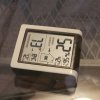Red_Foot04
New Member
I was 8 or 9 years old when I got my Red Foot, now named Shelby (haha original I know). At first, he was housed in a 30 gallon terrarium and was fed on a diet of romaine lettuce and the occasional boiled egg. About 2 years ago, his pyramiding was getting out of control. I decided to take over his diet then, deciding to make sure that his diet was properly balanced for better calcium usage (we also later found out that the shitty repto-cal that was his calcium supplement has phosphate in it, rendering it virtually ineffective at best. His pyramiding stopped, and he was moved into a 55 gallon container. Now, I am faced with another potential crisis: he seems to be ill and he is not eating and seems lethargic. Yesterday, I felt terribly guilty about his living situation. He's alive, which I guess something, but I feel terrible for forcing this poor creature to endure those 7 long years of suffering, and still do, even if it was out of stupidity rather than malevolence. But now, I am going to change that, and I am looking for advice as to how. I am going to list the changes I plan to make below:
1. Get his diet back on track. I feel like I never really got it to be sufficient, and I feel like I've slowly been letting it slide. I've been trying a roughly 60-30 combination of fruits (mango, kiwi, bannana, strawberry) and greens (collards, romaine, kale) with some alright results but I feel like I can do better.
2. Get him to the vet ASAP. I have noticed that the poor baby has a scab on the top of his neck, possibly he got it from climbing a water feature I recently put in his tank (its a crappy "wAtErFaLl" that I thought was going to do stuff for humidity control b/c I didn't feel like paying, and really couldn't afford, $80 for a humidifier, and the pathetic Reptifogger) and It has been rubbing against the top of his shell, causing it to split and I am worried it is infected. He needs to get to the vet ASAP.
3. Bigger enclosure. I live in a reasonably humid part of GA right on the boarder with Florida, and so he would probably do well outside with some humidity control measures. I will be building a 6*12 enclosure with a 4.5*8 wooden "house" that he can use during the winter months. The wooden "house" will have lighting, heating, humidity control and will still have everything he needs, and the "yard" will give him some extra space.
Any thoughts? Advice would be appreciated. Instead of worrying about him and feeling retarded for what I did, and I decided today that I will do something about it. And I want yall's help to make sure that he will live the best live possible.
Pictures:
1. Temperature / humidity gauge, was reading about 85 degrees and 80% humidity.

2. Today's meal: 2 cut up strawberries, some mango, a little piece of kiwi, and shredded collars greens, probably all in told around 5 ounces.

3. An overhead view of his enclosure, some things have been cut out though. Seen is the water feature, his water dish and the edge of his bowl.
4. A picture of that neck wound.
Please help, he needs it. Thank you for your time.
1. Get his diet back on track. I feel like I never really got it to be sufficient, and I feel like I've slowly been letting it slide. I've been trying a roughly 60-30 combination of fruits (mango, kiwi, bannana, strawberry) and greens (collards, romaine, kale) with some alright results but I feel like I can do better.
2. Get him to the vet ASAP. I have noticed that the poor baby has a scab on the top of his neck, possibly he got it from climbing a water feature I recently put in his tank (its a crappy "wAtErFaLl" that I thought was going to do stuff for humidity control b/c I didn't feel like paying, and really couldn't afford, $80 for a humidifier, and the pathetic Reptifogger) and It has been rubbing against the top of his shell, causing it to split and I am worried it is infected. He needs to get to the vet ASAP.
3. Bigger enclosure. I live in a reasonably humid part of GA right on the boarder with Florida, and so he would probably do well outside with some humidity control measures. I will be building a 6*12 enclosure with a 4.5*8 wooden "house" that he can use during the winter months. The wooden "house" will have lighting, heating, humidity control and will still have everything he needs, and the "yard" will give him some extra space.
Any thoughts? Advice would be appreciated. Instead of worrying about him and feeling retarded for what I did, and I decided today that I will do something about it. And I want yall's help to make sure that he will live the best live possible.
Pictures:
1. Temperature / humidity gauge, was reading about 85 degrees and 80% humidity.

2. Today's meal: 2 cut up strawberries, some mango, a little piece of kiwi, and shredded collars greens, probably all in told around 5 ounces.

3. An overhead view of his enclosure, some things have been cut out though. Seen is the water feature, his water dish and the edge of his bowl.

4. A picture of that neck wound.

Please help, he needs it. Thank you for your time.

